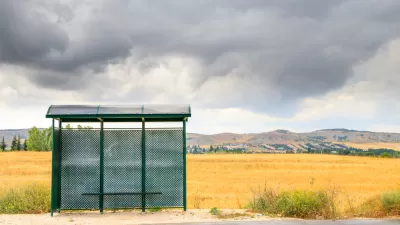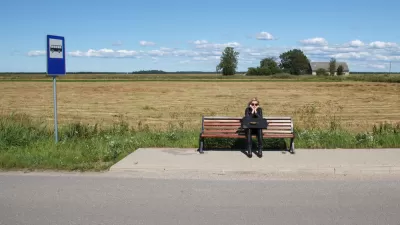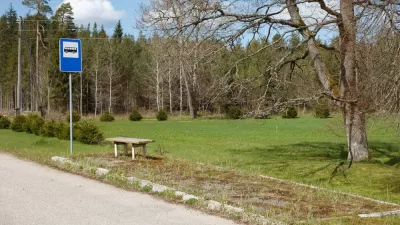A new report describes the important roles that public transit plays in rural communities and small towns, current demographic and economic trends that are increasing these demands, and examples of successful rural transit development programs.
A new report, "Public Transportation’s Impact on Rural and Small Towns: A Vital Mobility Link" [pdf] by the American Public Transportation Association and the Community Transportation Association of America describes the important roles that public transit plays in small towns and rural communities, examples of rural community public transport programs, and responses to common rural transit myths.
Public transportation helps rural communities become more efficient and equitable. It allows all residents, including non-drivers, enjoy independent mobility and receive a fair share of public spending on transportation facilities and services. Although public transit serves only a minor portion of total rural travel, many of those trips are crucial, including access to healthcare, basic shopping, employment and education.
This report describes current demographic and economic trends that are increasing demands for affordable mobility options in rural communities, including aging population, high poverty rates, and a large portion of military veterans. Serving these demands can provide multiple benefits; it helps rural residents age in place and attracts new residents, businesses and tourists. However, many of these benefits can be overlooked or undervalued in formal transportation planning. As a result, the importance of rural public transit improvements is often under estimated.
FULL STORY: Public Transportation’s Impact on Rural and Small Towns: A Vital Mobility Link

Planetizen Federal Action Tracker
A weekly monitor of how Trump’s orders and actions are impacting planners and planning in America.

Map: Where Senate Republicans Want to Sell Your Public Lands
For public land advocates, the Senate Republicans’ proposal to sell millions of acres of public land in the West is “the biggest fight of their careers.”

Restaurant Patios Were a Pandemic Win — Why Were They so Hard to Keep?
Social distancing requirements and changes in travel patterns prompted cities to pilot new uses for street and sidewalk space. Then it got complicated.

Platform Pilsner: Vancouver Transit Agency Releases... a Beer?
TransLink will receive a portion of every sale of the four-pack.

Toronto Weighs Cheaper Transit, Parking Hikes for Major Events
Special event rates would take effect during large festivals, sports games and concerts to ‘discourage driving, manage congestion and free up space for transit.”

Berlin to Consider Car-Free Zone Larger Than Manhattan
The area bound by the 22-mile Ringbahn would still allow 12 uses of a private automobile per year per person, and several other exemptions.
Urban Design for Planners 1: Software Tools
This six-course series explores essential urban design concepts using open source software and equips planners with the tools they need to participate fully in the urban design process.
Planning for Universal Design
Learn the tools for implementing Universal Design in planning regulations.
Heyer Gruel & Associates PA
JM Goldson LLC
Custer County Colorado
City of Camden Redevelopment Agency
City of Astoria
Transportation Research & Education Center (TREC) at Portland State University
Camden Redevelopment Agency
City of Claremont
Municipality of Princeton (NJ)





























